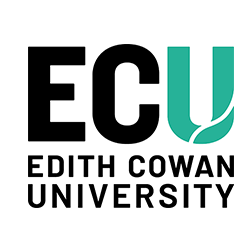Date of Award
2025
Document Type
Thesis
Publisher
Edith Cowan University
Degree Name
Doctor of Philosophy
School
School of Science
First Supervisor
Zora Singh
Second Supervisor
Andrew Woodward
Third Supervisor
Eben Afrifa-Yamoah
Abstract
Rubus berries are a highly sought after, nutritious, and delicate fruit which are consumed around the globe either as fresh, processed, or frozen since. The fruit is fragile and prone to higher postharvest losses due to incidence of decay, higher moisture loss, cell wall degradation and postharvest oxidative damage, leading to reduced levels of bioactive compounds such as phenolics, flavonoids, ascorbic acid, and anthocyanins. This project aimed to evaluate different pre- and postharvest interventions for their ability to extend the storage life and quality management of Rubus berries during low temperature storage at 2 ºC and 85 ± 2 % relative humidity (RH). The effects of preharvest melatonin (MLT) spray application on postharvest quality of blackberries and raspberries were investigated during cold storage. Following harvest, raspberries were cold stored for 10 days with 5-day storage intervals while blackberries were cold stored for 12 days with 4-day storage intervals. The results indicated that preharvest MLT application significantly reduced red drupelet reversion (RDR) in blackberries. Preharvest MLT treatment suppressed moisture loss, decay incidence, degradation of anthocyanins, flavonoids and phenolics, production of reactive oxygen species (ROS) and lipid peroxidation, while upregulating ascorbate-glutathione cycle, catalase, and superoxide dismutase activities in Rubus berries as compared to control fruit. The effects of preharvest methyl jasmonate (MeJA) on RDR, phenolic biosynthesis, lipid peroxidation, ROS metabolism and antioxidant capacity of blackberries were also investigated. MeJA-treated blackberries exhibited higher endogenous phenolic biosynthesis, with higher phenylalanine ammonia lyase (PAL) activity. Anthocyanin degradation was suppressed, resulting in a reduction of RDR in MeJA-treated blackberries than in control fruit. MeJA application improved ROS neutralisation by increasing the activity of antioxidant enzymes, ascorbic acid, and glutathione levels during 12-day cold storage. As compared to control fruit, preharvest MeJA application reduced fruit softening in raspberries, maintained higher levels of insoluble pectin and cellulose, and reduced the activity of cell wall hydrolysing enzymes including cellulase, pectin methyl esterase and polygalacturonase during 10-days storage at 2 ºC. Higher levels of phenolics were observed in raspberries treated with MeJA as compared to control fruit. The efficacy of polyimide based multilayer modified atmosphere packaging (MAP) was evaluated to determine its role in preserving levels of bioactive compounds and postharvest quality of Rubus berries. MAP alleviated fruit decay incidence and maintained higher soluble solids concentrations, ascorbic acid, total antioxidants, and glutathione in both raspberries and blackberries, than in control fruit. Higher activity of phenolic biosynthetic enzymes including PAL and shikimate dehydrogenase were also noted in Rubus berries stored in modified atmosphere (MA) conditions. The degradation of fruit colour was also delayed due to higher anthocyanin and flavonoid levels in MA-packed Rubus berries. The effect of different relative humidity (RH) levels (75, 85, 95 %) during cold storage at 2°C on moisture loss and postharvest quality of Rubus berries during 10- days cold storage was evaluated. The results indicated that an RH level of 95 % suppressed moisture loss from Rubus berries, while higher fruit decay was observed at the same RH in raspberries as compared to fruit stored at 85 % RH. Fruit subjected to 85 % and 95 % RH had higher titratable acidity, ascorbic acid, total phenolics and flavonoids after 10 days cold storage than those stored at 75 % RH. Higher glutathione content, monomeric anthocyanin pigment and total anthocyanins were noted both in blackberries and raspberries during cold storage at 85 % RH. Fruit quality of Rubus berries deteriorated more rapidly during storage at 75 % RH, while storage at 95 % RH level caused higher fruit decay in raspberries. In conclusion, the oxidative damage in Rubus berries during cold storage was mitigated by preharvest MLT and MeJA application as well as by using MAP storage, which was associated with higher phenolics biosynthesis, delayed moisture loss and decay incidence, and upregulation of the ascorbate-glutathione cycle, as well as delayed lipid peroxidation and ROS accumulation. The storage life of blackberries could be extended with preharvest application of MLT (100 µmol L-1 ) and MeJA (1 mmol L-1 ), two weeks before anticipated harvest. Preharvest application of MLT (100 µmol L-1 ) and MeJA (2 mmol L-1 ) three days before tentative harvest maturity extended the postharvest storage life and quality. Fruit senescence was lower, and postharvest quality was higher in Rubus berries stored in polyamide-based MAP than in control. Cold storage of raspberries and blackberries for 10 days at 85 and 95 % RH levels could maintain relatively better postharvest quality. Although the storage life of Rubus berries could be extended by applying different pre and postharvest interventions, the efficacy of each intervention depends on fruit quality at treatment, harvest maturity, storage duration and conditions (relative humidity), and plant species.
Access Note
Access to this thesis is embargoed until 25th April 2030
DOI
10.25958/fteh-zd42
Recommended Citation
Shah, H. (2025). Postharvest quality management of Rubus berries. Edith Cowan University. https://doi.org/10.25958/fteh-zd42

